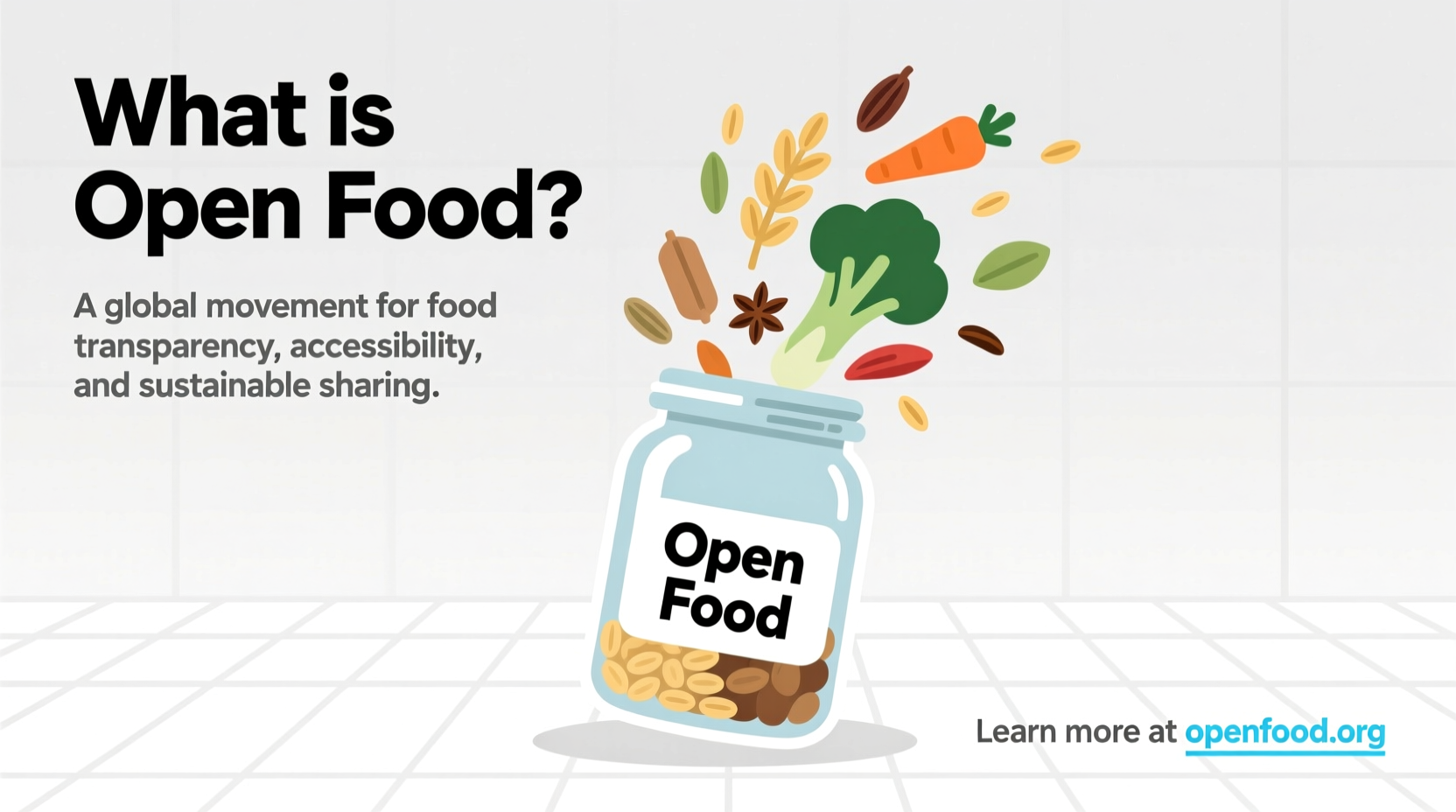Understanding what is open food goes beyond a simple definition—it's about recognizing a transformative approach to how we grow, share, and consume food. This comprehensive guide reveals how open food systems are reshaping local agriculture, reducing food waste, and empowering communities through transparent supply chains. Whether you're a consumer seeking ethical food options or a producer exploring collaborative models, you'll discover practical insights you can implement immediately.
The Evolution of Open Food Systems
The concept of open food has evolved significantly over the past two decades, moving from niche community experiments to globally recognized frameworks. What began as small-scale food cooperatives in the early 2000s has matured into sophisticated digital platforms connecting farmers, consumers, and food businesses.
| Time Period | Key Developments | Community Impact |
|---|---|---|
| 2000-2005 | Local food cooperatives emerge in Europe and North America | Direct farmer-consumer relationships established |
| 2006-2010 | Open-source food mapping projects begin | Community food resources become visually accessible |
| 2011-2015 | Open Food Network platform launches globally | Standardized digital infrastructure for food hubs |
| 2016-Present | Integration with blockchain for supply chain transparency | Real-time tracking of food from farm to table |
This timeline demonstrates how open food has progressed from localized experiments to integrated systems that now serve over 50 countries worldwide, according to research from the UN Food and Agriculture Organization. The movement has gained particular traction in regions facing food insecurity, where transparent supply chains help communities better manage scarce resources.
How Open Food Works in Practice
At its core, open food operates through three interconnected principles that differentiate it from conventional food systems:
- Transparent Supply Chains—Every step from production to consumption is documented and accessible
- Shared Infrastructure—Community-owned facilities for processing, storage, and distribution
- Collaborative Decision-Making—Stakeholders collectively determine system priorities and policies
Consider a community-supported agriculture (CSA) program operating on open food principles. Instead of the traditional model where consumers simply purchase boxes of produce, an open food CSA provides detailed information about farming practices, allows members to participate in harvest planning, and shares real-time data about crop yields and distribution logistics. This transparency builds trust while creating more resilient local food networks.

Practical Applications You Can Implement Today
Whether you're a consumer, producer, or community organizer, open food principles offer actionable pathways to more sustainable food systems:
For Consumers
Start by seeking out food providers who offer transparent sourcing information. Look for platforms that provide:
- Farmer profiles with direct contact information
- Documented growing practices and certifications
- Clear pricing breakdowns showing farmer compensation
For Producers
Consider joining or creating a local food hub that operates on open principles. Successful implementations often include:
- Shared delivery routes to reduce carbon footprint
- Collective marketing efforts to reach wider markets
- Transparent pricing models that show cost breakdowns
Context Boundaries: Where Open Food Works Best
While promising, open food systems have specific contexts where they thrive and others where challenges emerge. Understanding these boundaries helps set realistic expectations:
- Most Effective In: Localized food economies, community-supported agriculture, urban farming initiatives, and regions with strong cooperative traditions
- Limited Effectiveness In: Highly regulated international food markets, commodity crop systems, and regions with minimal digital infrastructure
- Key Limitation: Open food networks typically serve best within 100-mile radiuses where transportation logistics remain efficient, according to research from USDA's Local Food Systems report
These context boundaries don't represent failures of the model but rather help identify where open food principles can be most effectively implemented. Many successful open food networks operate as complementary systems alongside conventional supply chains rather than complete replacements.
Getting Started with Open Food Resources
Ready to explore open food systems in your community? These practical resources provide legitimate starting points:
- Open Food Network—Global platform connecting food producers and consumers
- Local Harvest—Directory of farmers markets, family farms, and other sources of sustainably grown food
- National Food Hub Directory—Comprehensive listing of food hubs operating on transparent principles
When evaluating these resources, look for evidence of genuine transparency through accessible documentation of their operational practices, clear information about participant requirements, and verifiable impact metrics. Authentic open food networks welcome scrutiny of their processes as a demonstration of their commitment to transparency.
Frequently Asked Questions
What is the primary difference between open food and organic food?
Organic food focuses specifically on farming methods that avoid synthetic pesticides and fertilizers, while open food emphasizes transparency throughout the entire supply chain, collaborative decision-making, and shared infrastructure. Organic certification addresses production methods, whereas open food addresses systemic relationships within the food network.
Can small-scale farmers realistically participate in open food networks?
Yes, small-scale farmers often benefit significantly from open food networks through shared infrastructure and collective marketing. Many networks operate on sliding scale fees based on farm size and revenue, making participation accessible. Research from the USDA Economic Research Service shows that small farms participating in food hubs increased their revenue by an average of 35% compared to those selling through conventional channels.
How does open food address food safety concerns?
Open food networks maintain food safety through transparent documentation of handling practices, shared compliance resources, and community accountability. Many networks implement standardized food safety protocols that members must follow, with verification processes visible to all participants. This transparency often exceeds conventional supply chain documentation because stakeholders can directly verify safety practices rather than relying on third-party certifications alone.
Is open food the same as the farm-to-table movement?
While related, these concepts differ significantly. Farm-to-table typically describes a restaurant marketing approach emphasizing local sourcing, but often lacks transparency about actual supply chain practices. Open food represents a comprehensive system with documented processes, shared infrastructure, and collaborative governance that extends beyond restaurant marketing to create sustainable community food economies.











 浙公网安备
33010002000092号
浙公网安备
33010002000092号 浙B2-20120091-4
浙B2-20120091-4